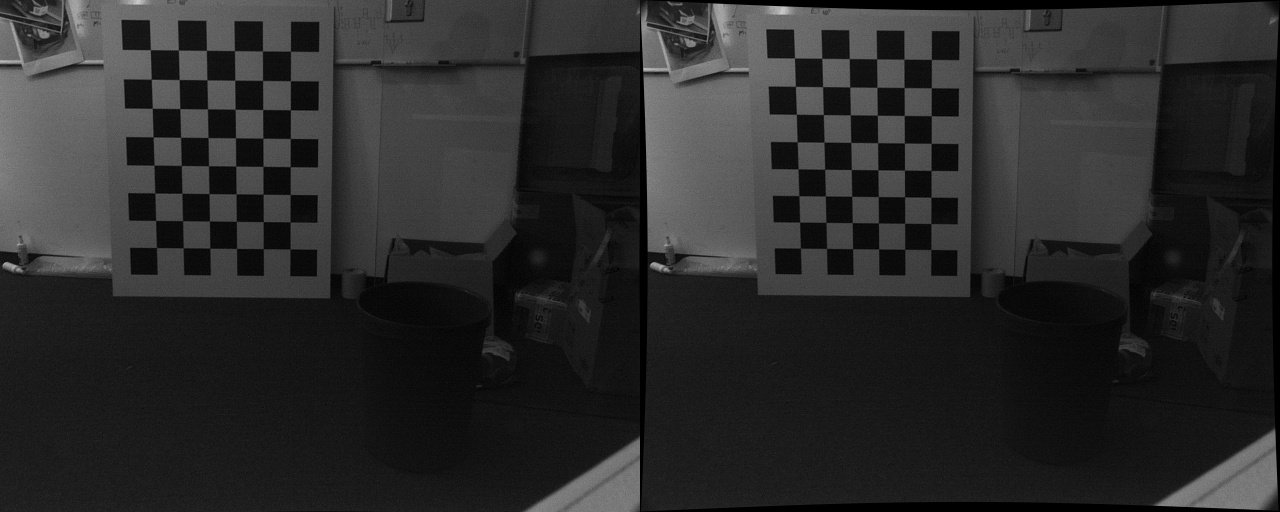What does projection matrix provided by the calibration represent?
I'm using such a tool from ROS/OpenCV in order to perform the camera calibration. The procedure ends up providing: camera matrix, distortion parameters, rectification matrix and projection matrix. As far as I know the projection matrix contains the intrinsic parameter matrix of the camera multiplied by the extrinsic parameters matrix of the matrix. The extrinsic parameter matrix itself provides the roto-translation of the camera frame with respect to the world frame. If these assumptions are correct...how is the projection matrix computed by Opencv? I,m not defining any world frame!
camera matrix:
414.287922 0.000000 382.549277
0.000000 414.306025 230.875006
0.000000 0.000000 1.000000
distortion:
-0.278237 0.063338 -0.001382 0.000732 0.000000
rectification:
1.000000 0.000000 0.000000
0.000000 1.000000 0.000000
0.000000 0.000000 1.000000
projection:
297.051453 0.000000 387.628900 0.000000
0.000000 369.280731 227.051305 0.000000
0.000000 0.000000 1.000000 0.000000



